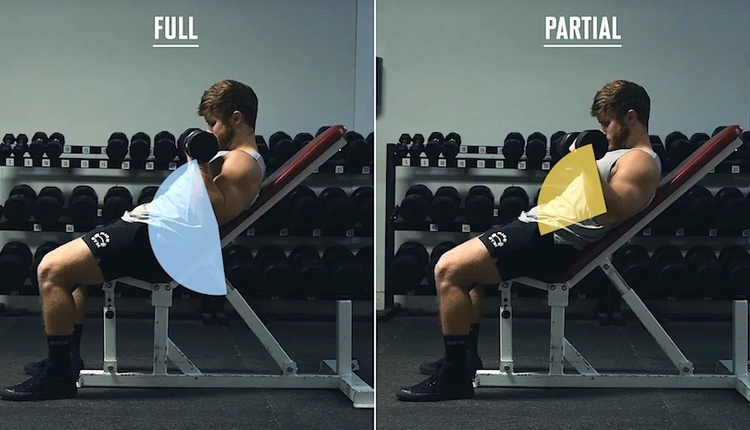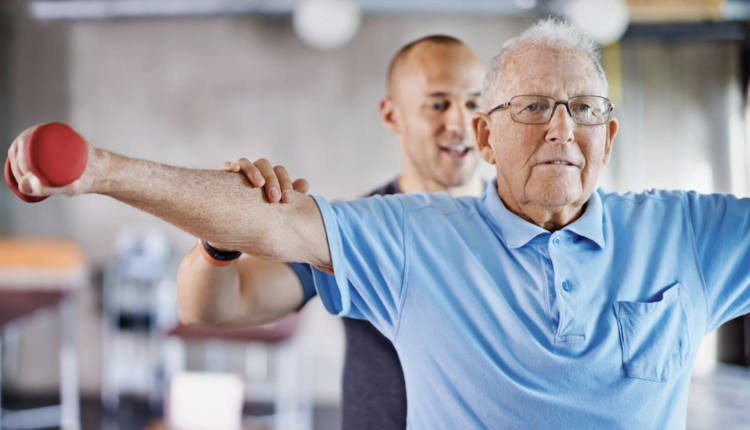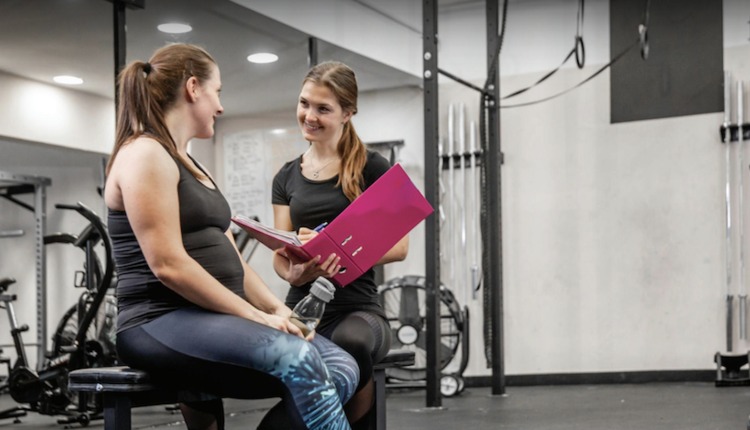
GLP-1 medications are effective weight-loss drugs that have become well-known and accessible recently. They can yield 15%–20% weight reductions in adults, previously only possible after bariatric surgery. The effects of GLP-1s increase postprandial insulin secretion from pancreatic β-cells, suppress glucagon secretion from α-cells, slow gastric emptying, and reduce appetite.
As much of a “miracle weight-loss drug,” as the media has made it out to be, it is intended to be used in adjunct to lifestyle interventions to be successful.
If your clients are taking this drug or previously took it, exercise should be an essential variable to include. Let's look at some of the reasons why exercise, primarily via resistance training, is crucial for losing the most weight while on GLP-1 and reducing weight regain when off of it.
Exercise preserves muscle loss in caloric deficits
Being in a caloric deficit alone can result in 10%-30%, even 40% in some cases, of the weight lost from muscle mass. Usually, the heavier the person, the greater the percentage of weight lost comes from fat.
Any muscle loss can be detrimental, as it is metabolically active and contributes to many physiological processes. Some studies show that GLP-1 use without exercise leads to similar lean muscle mass loss patterns compared to medication-free weight loss.
Yet, other studies show a muscle atrophy-protecting effect. However, studies showing a muscle-loss-protecting effect were done on mice and measured for muscle in ways that differed significantly from those in humans. Furthermore, the human subject trials varied in length and dose, which makes it hard to conclude that GLP-1 use prevents muscle loss while losing fat at this time, and we don’t know if exercise was a variable controlled for.
GLP-1 users must exercise
If your client is on a GLP-1, wouldn’t you want to do everything possible to leverage its effectiveness and help them lose the most weight while on it? How does exercise influence weight loss outcomes in those who are on GLP-1? One recent randomized control trial split participants into an exercise group, a GLP-1 group and a combined group.
The results showed that the combined group, which did 150 minutes of cardio a week, lost 6.1% in abdominal fat. The exercise group lost 2.6%, and the GLP-1 group lost 2.8%. When exercise is leveraged with GLP-1, the weight loss effect is more substantial, leading to a lower risk of type 2 diabetes and cardiovascular disease. Interestingly, GLP-1 alone was only marginally better than 150 minutes of weekly cardio.
These results show that even cardio training has a muscle-protective effect compared to no exercise. However, strength training is much better at preserving muscle. This shows that some activities are better than none. Similarly to non-GLP-1 patients, combined strength and cardio training are more effective for weight loss than strength or cardio alone.
Most available studies on exercise and GLP-1s used only cardio-based training and didn’t use any out-of-the-ordinary guidelines. Most used the basic “150 minutes per week at moderate intensity” guideline. Future research should investigate the best exercise types while on GLP-1.
In sum, many studies show that combined exercise and GLP-1 produce the best results during and after discontinuation of use.
Exercise maintains weight loss after GLP-1 deprescription
In 2025, some insurance companies are updating the rules to narrow the qualifications for being prescribed the drug. Some are raising the BMI threshold and requiring diabetes as a prerequisite. This will lead to many people losing access to the medication and back to square one: weight loss through lifestyle change alone. This is where fitness professionals will play a pivotal role.
One study concluded that two-thirds of the weight loss was regained after one year off GLP-1. Other studies show that weight regain after GLP-1 use is common. Only some people can use GLP-1 for the long term, so what if an established exercise routine during GLP-1 use could result in maintained weight loss?
A study investigated whether weight loss was sustained better one year after termination of a GLP-1, supervised exercise program, or combined for one year.
In that study, participants who received supervised exercise instruction maintained a weight loss of at least 10% of initial body weight one year after treatment termination compared with those who received liraglutide alone or placebo. Weight regain during the one-year post-treatment phase was 6 kg larger for participants who had previously received liraglutide alone than participants who had previously received supervised exercise alone, despite similar initial weight loss.
These results show that adding supervised exercise during GLP-1 use improves weight loss maintenance after treatment termination. Other randomized control trials show similar results, too, with the best results coming from supervised exercise exceeding the 150-minute/week guideline.
Fitness professionals can use these research findings to share with their clients, when appropriate, to highlight the importance of exercise, especially strength training, while on and off GLP-1s.
Exercise can improve self-perception of good health
Taking medication may reinforce the belief of being unwell. Research shows that seeing one’s health as poor is closely related to a higher prevalence of chronic diseases, mortality, depression and hospital visits. This belief can also lead to decreased activity and healthy eating, triggering a spiraling downward slope.
In one study, treatment with GLP-1 and a placebo significantly reduced health perception. On the flip side, adding exercise to the GLP-1 did not lead to decreased health perception, with exercise groups maintaining their initial improvement in well-being after the first weight-loss maintenance phase.
Through increased self-efficacy, exercises protect against poor health perception that can accompany the use of GLP-1s.
Conclusion
Much research has emerged in the last five years, but more is needed to guide the required lifestyle changes. However, changes in access are on the way, and weight-loss clients can be sent back to fitness professionals.
Fitness professionals can expect many new clients from this population as insurance rules change, sending patients back to lifestyle-only interventions to maintain weight loss. Fitness professionals play a key role in the outcomes of GLP-1 users to guide and encourage exercise. It is also intended to be used with GLP-1, leading to much higher weight loss rates. Weight maintenance is the hardest part, however, and exercise has been shown to prevent weight regain after discontinued use of the drug.
On a psychological note, exercise increases self-efficacy and prevents feeling unhealthy, which is all too common a false belief many people have. As more exercise guidelines for using a GLP-1 are updated from the research, fitness professionals should treat GLP-1 users similarly to weight loss clients.
Fitness professionals can utilize standard weight loss guidelines, such as 150 or more minutes a week of moderate-intensity cardio and, very importantly, at least two resistance training sessions a week. Even two weekly sessions of fifteen-minute-long strength training circuits have a powerful effect. Let’s get the GLP-1 population strong so they can have the best outcomes possible!
Brandon Hyatt, MS, CSCS, NFPT-CPT, NASM-CES, BRM, PPSC is an experienced leader, educator, and personal trainer with over 7 years of success in building high-performing fitness teams, facilities and clients. He aspires to become a kinesiology professor while continuing to grow as a professional fitness writer and inspiring speaker, sharing his expertise and passion. He has a master's degree in kinesiology from Point Loma Nazarene University. His mission is to impact countless people by empowering and leading them in their fitness journey.





















